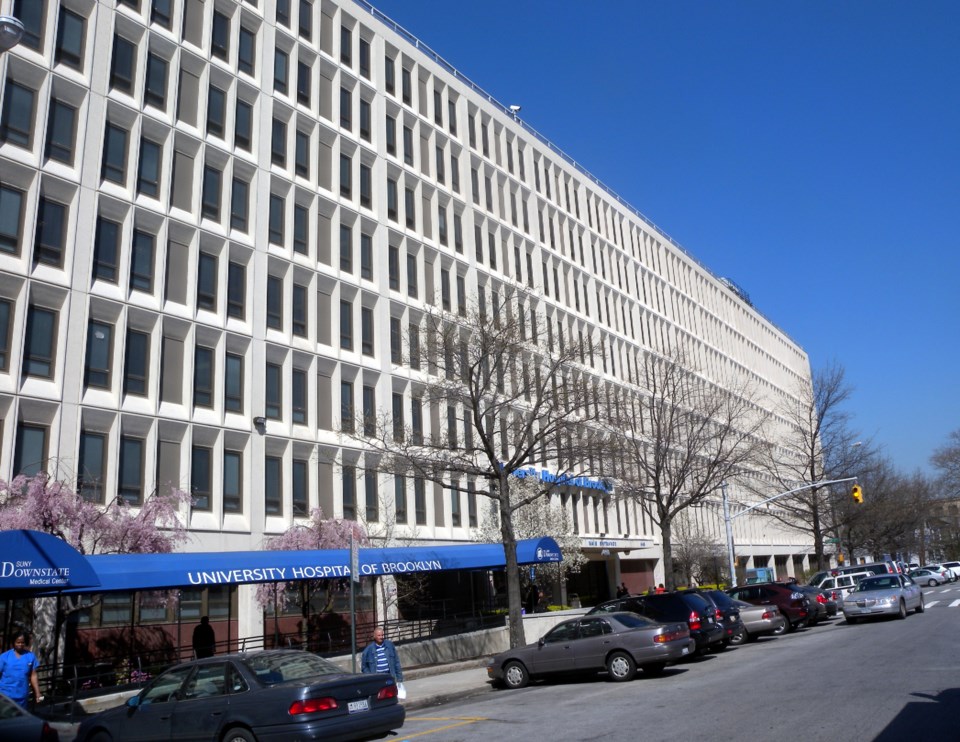The state’s decision to scale back operations at SUNY Downstate Medical Center is being met with skepticism and anger that residents of a predominantly low-income, minority neighborhood will have diminished access to critical health care options.
The transformation plan for the hospital will see inpatient services moved to a new wing inside Kings County Hospital, which is directly across the street. Outpatient services will be moved to a new facility and will include urgent care, ambulatory surgery and primary care. The state has allotted $300 million in capital funds for the transformation project.
When SUNY Chancellor John B. King, Jr. attended a town hall meeting on the issue at East Flatbush’s Lenox Road Baptist Church last week, he called the meeting the first of an “extensive” community engagement process and stressed that the state is committed to engaging with community input on the future of the hospital.
On Wednesday, SUNY said the process will begin with a needs assessment to better understand stakeholders’ perspective on the current state of affairs at SUNY Downstate’s health sciences university and teaching hospital, according to a press release. This will be followed by a visioning process to ensure that community-sourced ideas will help shape SUNY’s plan going forward.
King pointed to the hospital’s $100 million deficit as the central reason for the transformation, as well as the hospital having an excess capacity of beds for inpatient care. The building’s disrepair due to chronic lack of investment was also behind the decision. King said the construction of a new hospital would cost approximately $3 to $4 billion and is not currently an option.
“There's a lot of inpatient capacity in this service area, but what is desperately needed is more outpatient services for primary care,” said King. “One of the realities of ER services in the service area is that many of the folks who are coming to the ER could be served in an urgent care outpatient or even primary care context.”
Though King insisted that no inpatient services will be terminated in the transformation, many fear the impact the hospital’s closure will have on the community, which is largely comprised on low-income people of color.
“As the only full scale academic medical center in the borough, Downstate must stay open,” said Dr. Ernest J. Barthélemy, chief of Neurosurgery at Downstate. “A threat to shut the hospital down is moving backwards. It's a further injustice for this community and not what this community deserves.”
Other doctors at the hospital echoed similar sentiment.
“The other hospitals that are in the area will not be able to absorb the volume that we serve at Downstate,” said Ramon E. Gist, director of Pediatric Critical Care and Medicine at Downstate. “There will be increased wait times, increased medical errors, and increased staff dissatisfaction at those hospitals as well.”
Public Health advocates are especially concerned about the potential loss of the hospital’s transplant center, which overwhelmingly serves people of color. In 2023, 100% of the hospital’s kidney transplant recipients were non-white. In comparison, 65% of transplant recipients at NYU Langone Hospital were non-white.
“It's really a huge, service that deserves investment rather than divestment at this point,” said Karina Albistegui Adler, co-director of Health Justice at New York Lawyers for the Public Interest, regarding the closure of the kidney transplant center. “It seems contrary to all of the other stated goals of health equity and addressing inequality in the health care system that the governor has put out there.”
State Senator Zellnor Myrie also spoke out against the plan, pointing to a newly released report by NYC Health and Hospitals on inequity in Brooklyn.
“SUNY Downstate serves two of the highest-need demographics named in the report – Black and foreign-born residents,” said Myrie in a statement. “Proposing to close Downstate without a ‘community-driven effort’-which is especially called for in this report-is a slap in the face to my constituents.”
King said that community input will be considered regarding what is done with the hospital's building once inpatient services are moved to the new wing at Kings County. A survey process will begin within the coming months, he said.


.png;w=120;h=80;mode=crop)

